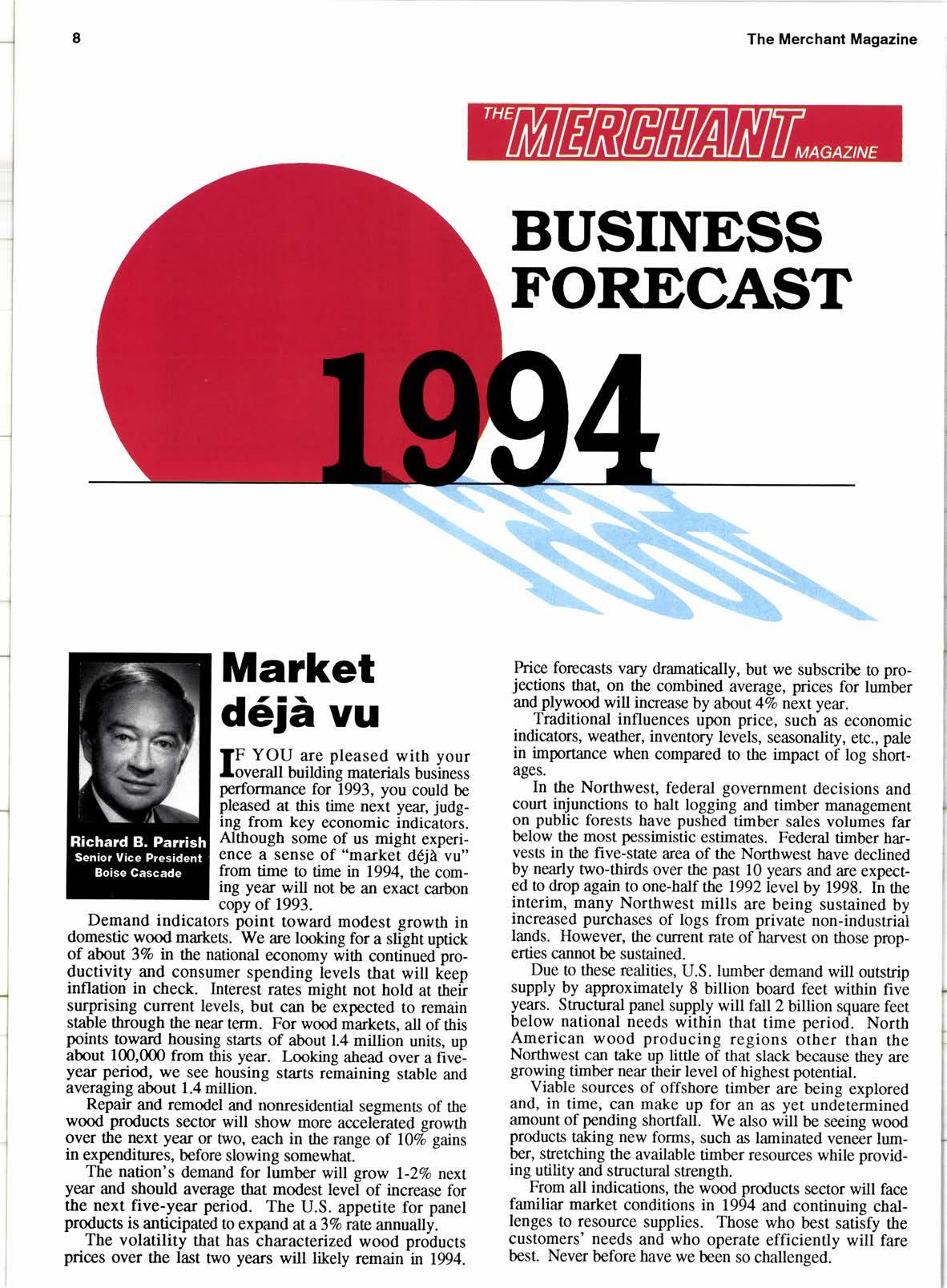
1 minute read
BUSINESS FORECAST *-}sffi_
Price forecasts vary dramatically, but we subsoibe !o projections that, on the combined average, prices for lumber an{plywgod will increase by abot4To next year.
Traditional influences upon price, such as economic indicators, weather, inventory levels, seasonality, etc., pale in importance when compared to the impact of log sh-ortages.
In the Northwest, federal government decisions and court injunctions to halt logging and timber management on public forests have pushed timber sales volumes far below the most pessimistic estimates. Federal timber harvests in the five-slate area of the Nonttrwest bave declined by nearly two-thirds over the past 10 years and are expected to drop again to one-half the lggzlevel by 1998. In the interim, many Northwest mills are being sustained by increased purchases of logs from private-non-industrial lands. However, the current rate of harvest on those properties cannot be sustained.
Due to these realities, U.S. lumber demand will outstrip supply by approximately 8 billion board feet within five years. Strucural panel supply will fall2 billion square feet below national needs within that time period. North American wood producing regions other than the Northwest can take up little of that slack because they are growing timber near their level of highest potential.
Viable sources of offshore timber are being explored and, in time, can make up for an as yet undetennined amount of pending shortfall. We also will be seeing wood products taking new forms, such as laminated veneer lumber, str_erching the available timber resources while providing utility and structural strength.
From all indications, the wood products sector will face familiar market conditions in 1994 and continuing challenges to resource supplies. Those who best satiify the customers' needs and who operate efficiently will fare best. Never before have we been so challensed.

